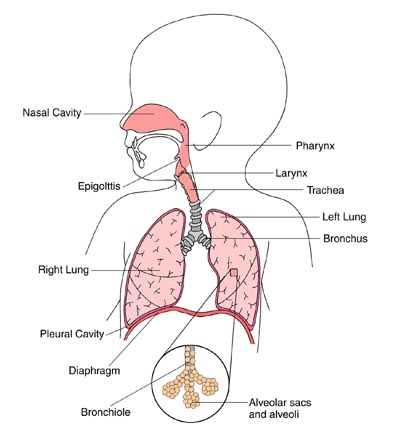Cystic Lung Disease | Symptoms & Causes
What are the symptoms of cystic lung disease?
While each child may experience symptoms differently, and while symptoms may depend on the condition causing the disease, some common symptoms include:
- breathing difficulty
- pain with breathing
- wheezing
- shortness of breath
- recurrent pneumonia
Symptoms of cystic lung diseases may resemble other conditions or medical problems. Always consult your child’s physician for a diagnosis.
Can cystic lung disease be detected prenatally?
Yes, sometimes. Ultrasound may reveal some cysts or conditions; other times, symptoms may not appear until your child is significantly older.
Cystic Lung Disease | Diagnosis & Treatments
How is cystic lung disease diagnosed?
If your child's physician suspects a cystic lung disease, the following tests may be performed:
- prenatal ultrasound
- chest computerized tomography scan of the lungs (CT or CAT scan): this is a diagnostic imaging procedure that uses a combination of x-rays and computer technology to produce cross-sectional images of your child’s lungs.
- Chest x-ray. This is a diagnostic test which uses invisible electromagnetic energy beams to produce images of internal tissues, bones and organs of the chest onto film.
The four conditions of cystic lung disease may become symptomatic, or be discovered, at different times:
Bronchogenic cysts
The condition is usually discovered on a fetal ultrasound or a chest x-ray after your fetus or newborn demonstrates signs and symptoms of airway obstruction.
- A CCAM may be a coincidental finding at fetal ultrasound or it may be diagnosed when an ultrasound is done on a fetus in distress.
- Whether cystic or solid, a CCAM can be life threatening to the fetus, leading to a mediastinal shift, impaired function of the heart and fetal hydrops (congenital heart failure). Therefore, if your child’s doctors detect a lesion prenatally, they will want to monitor it closely.
Lobar emphysema
- This condition is usually also discovered on a chest x-ray after your child demonstrates extreme difficulty and pain with breathing.
- These symptoms usually become apparent right after birth, but may be delayed for as long as five to six months in some patients. Other patients remain undiagnosed until school age or beyond.
- If the obstruction is not found on an x-ray, a bronchoscope may be used. For this procedure, the bronchoscope, a lighted tube, is passed down your child’s windpipe so that doctors can examine the bronchial tubes.
Pulmonary sequestration
- Extralobar sequestration is most often found coincidentally when your baby is a newborn because of the discovery of another anomaly, such as a diaphragmatic hernia.
- In contrast, intralobar sequestration is typically discovered when your child is somewhat older, and has a lobar pneumonia that does not clear up or that leaves a radiographic abnormality even after the infection has been successfully treated.
What treatments are available for cystic lung disease?
Bronchogenic cysts
Since a cyst may compress your child's airway, it is important that it be removed in a careful and controlled manner. Depending on your child's age, symptoms, and the location of the cyst, it may be possible to remove it via thoracoscopic (minimally invasive) surgery.
To help your child during surgery, the surgeon may include careful ventilation or even use extracorporeal membrane oxygenation (ECMO). This is a machine that takes over for the lungs, providing oxygen and respiratory support.
Even if your child isn't experiencing symptoms from the bronchogenic cyst, it should be removed to prevent long-term complications, including infection, bleeding or malignant degeneration.
There are several ways to treat symptomatic CCAMs. These include:
- surgical aspiration (fluid suctioning) of a cystic lesion
- removal of a solid mass or affected lobe during fetal
For lesions that seem to be regressing and are not producing further symptoms, your child's doctors will perform simple post-natal follow up, which will include careful chest imaging and potential delayed pulmonary resection.
Though this course of action is open to debate, some people choose to have these asymptomatic CCAMs removed because of the rare but reported cases of malignant degeneration in these lesions as the babies grow into adults.
A CCAM may also produce neonatal respiratory distress complicated by pulmonary hypertension, and such babies may require urgent neonatal operation and/or aggressive management of their acute respiratory failure including the use of extracorporeal membrane oxygenation (ECMO), a machine that takes over for the lungs, providing oxygen and respiratory support.
Lobar emphysema and pulmonary sequestration
For these conditions, surgery is almost always required to remove the affected lobe (called a lobectomy) in order to prevent further damage to the entire lung. If done promptly, surgical treatment is almost always successful, leaving little or no permanent impairment of breathing capability.
What is the long-term outlook for a child with a cystic lung disease?
Fortunately, children typically do well after the treatment of their cystic lung disease. If they have severe associated anomalies or if the normal lung development has been compromised, then the outcomes may be more limited.



